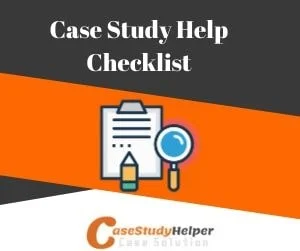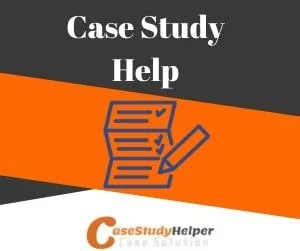

Tom Paine Mutual Life Insurance Co Case Study Solution
Tom Paine Mutual Life Insurance Co Case Study Help
Tom Paine Mutual Life Insurance Co Case Study Analysis
The following section focuses on the of marketing for Tom Paine Mutual Life Insurance Co where the company's consumers, rivals and core competencies have assessed in order to validate whether the choice to launch Case Study Help under Tom Paine Mutual Life Insurance Co brand would be a practical option or not. We have actually to start with looked at the type of customers that Tom Paine Mutual Life Insurance Co handle while an evaluation of the competitive environment and the company's weak points and strengths follows. Embedded in the 3C analysis is the validation for not launching Case Study Help under Tom Paine Mutual Life Insurance Co name.

Both the groups use Tom Paine Mutual Life Insurance Co high performance adhesives while the company is not just involved in the production of these adhesives however likewise markets them to these consumer groups. We would be focusing on the customers of instant adhesives for this analysis because the market for the latter has a lower capacity for Tom Paine Mutual Life Insurance Co compared to that of instantaneous adhesives.
The overall market for instant adhesives is around 890,000 in the United States in 1978 which covers both client groups which have been recognized earlier.If we take a look at a breakdown of Tom Paine Mutual Life Insurance Co possible market or customer groups, we can see that the business offers to OEMs (Original Equipment Makers), Do-it-Yourself customers, repair and overhauling business (MRO) and makers handling items made from leather, plastic, metal and wood. This diversity in customers recommends that Tom Paine Mutual Life Insurance Co can target has different alternatives in terms of segmenting the market for its brand-new item specifically as each of these groups would be requiring the exact same kind of product with respective modifications in packaging, need or quantity. However, the consumer is not price sensitive or brand conscious so launching a low priced dispenser under Tom Paine Mutual Life Insurance Co name is not a suggested option.
Tom Paine Mutual Life Insurance Co is not simply a producer of adhesives however takes pleasure in market leadership in the immediate adhesive industry. The company has its own proficient and qualified sales force which adds worth to sales by training the company's network of 250 distributors for assisting in the sale of adhesives.
Core proficiencies are not limited to adhesive production just as Tom Paine Mutual Life Insurance Co also specializes in making adhesive dispensing equipment to facilitate using its items. This double production technique gives Tom Paine Mutual Life Insurance Co an edge over rivals considering that none of the competitors of dispensing devices makes instant adhesives. Furthermore, none of these rivals sells directly to the consumer either and utilizes suppliers for reaching out to customers. While we are taking a look at the strengths of Tom Paine Mutual Life Insurance Co, it is very important to highlight the company's weak points as well.
The company's sales staff is competent in training distributors, the truth remains that the sales team is not trained in selling devices so there is a possibility of relying greatly on suppliers when promoting adhesive equipment. Nevertheless, it should likewise be kept in mind that the suppliers are revealing hesitation when it concerns offering devices that requires servicing which increases the challenges of offering equipment under a particular brand name.
The business has actually products aimed at the high end of the market if we look at Tom Paine Mutual Life Insurance Co product line in adhesive devices especially. The possibility of sales cannibalization exists if Tom Paine Mutual Life Insurance Co offers Case Study Help under the exact same portfolio. Offered the truth that Case Study Help is priced lower than Tom Paine Mutual Life Insurance Co high-end product line, sales cannibalization would absolutely be impacting Tom Paine Mutual Life Insurance Co sales profits if the adhesive equipment is sold under the business's brand name.
We can see sales cannibalization impacting Tom Paine Mutual Life Insurance Co 27A Pencil Applicator which is priced at $275. If Case Study Help is introduced under the business's brand name, there is another possible hazard which might reduce Tom Paine Mutual Life Insurance Co revenue. The reality that $175000 has been spent in promoting SuperBonder suggests that it is not a great time for launching a dispenser which can highlight the truth that SuperBonder can get logged and Case Study Help is the anti-clogging solution for the immediate adhesive.
Additionally, if we look at the market in general, the adhesives market does not show brand orientation or cost awareness which provides us 2 extra reasons for not introducing a low priced item under the business's brand name.
The competitive environment of Tom Paine Mutual Life Insurance Co would be studied via Porter's five forces analysis which would highlight the degree of rivalry in the market.
Bargaining Power of Buyer: The Bargaining power of the purchaser in this industry is low specifically as the purchaser has low knowledge about the item. While companies like Tom Paine Mutual Life Insurance Co have handled to train suppliers relating to adhesives, the last consumer is dependent on suppliers. Roughly 72% of sales are made directly by producers and distributors for instant adhesives so the purchaser has a low bargaining power.
Bargaining Power of Supplier: Offered the fact that the adhesive market is controlled by three gamers, it could be stated that the provider delights in a higher bargaining power compared to the buyer. The reality remains that the supplier does not have much influence over the purchaser at this point specifically as the purchaser does not reveal brand name recognition or rate level of sensitivity. This indicates that the supplier has the greater power when it comes to the adhesive market while the purchaser and the manufacturer do not have a major control over the real sales.
Threat of new entrants: The competitive environment with its low brand commitment and the ease of entry shown by foreign Japanese competitors in the instant adhesive market suggests that the marketplace enables ease of entry. If we look at Tom Paine Mutual Life Insurance Co in particular, the business has double capabilities in terms of being a maker of adhesive dispensers and immediate adhesives. Prospective dangers in devices giving industry are low which reveals the possibility of producing brand name awareness in not just instant adhesives but likewise in giving adhesives as none of the industry players has actually managed to position itself in double capabilities.
Threat of Substitutes: The threat of replacements in the instantaneous adhesive industry is low while the dispenser market in particular has substitutes like Glumetic tip applicators, in-built applicators, pencil applicators and sophisticated consoles. The reality stays that if Tom Paine Mutual Life Insurance Co introduced Case Study Help, it would be delighting in sales cannibalization for its own items. (see appendix 1 for structure).

Despite the fact that our 3C analysis has actually given different factors for not releasing Case Study Help under Tom Paine Mutual Life Insurance Co name, we have a suggested marketing mix for Case Study Help offered listed below if Tom Paine Mutual Life Insurance Co decides to proceed with the launch.
Product & Target Market: The target market selected for Case Study Help is 'Motor vehicle services' for a number of factors. This market has an extra growth capacity of 10.1% which may be a great enough specific niche market sector for Case Study Help. Not only would a portable dispenser deal benefit to this particular market, the fact that the Diy market can also be targeted if a potable low priced adhesive is being offered for usage with SuperBonder.
Price: The recommended cost of Case Study Help has been kept at $175 to the end user whether it is offered through suppliers or via direct selling. This price would not consist of the expense of the 'vari idea' or the 'glumetic pointer'. A cost below $250 would not need approvals from the senior management in case a mechanic at a motor vehicle upkeep shop needs to purchase the item on his own. This would increase the possibility of affecting mechanics to buy the item for use in their everyday maintenance jobs.
Tom Paine Mutual Life Insurance Co would just be getting $157 per unit as displayed in appendix 2 which offers a breakdown of gross profitability and net success for Tom Paine Mutual Life Insurance Co for launching Case Study Help.
Place: A circulation design where Tom Paine Mutual Life Insurance Co directly sends out the item to the regional distributor and keeps a 10% drop shipment allowance for the distributor would be used by Tom Paine Mutual Life Insurance Co. Given that the sales team is already taken part in selling instant adhesives and they do not have proficiency in selling dispensers, including them in the selling procedure would be costly particularly as each sales call costs roughly $120. The suppliers are already offering dispensers so selling Case Study Help through them would be a favorable option.
Promotion: A low advertising budget needs to have been assigned to Case Study Help however the fact that the dispenser is an innovation and it needs to be marketed well in order to cover the capital expenses sustained for production, the recommended advertising strategy costing $51816 is advised for at first introducing the item in the market. The planned ads in publications would be targeted at mechanics in automobile maintenance shops. (Suggested text for the advertisement is displayed in appendix 3 while the 4Ps are summarized in appendix 4).
